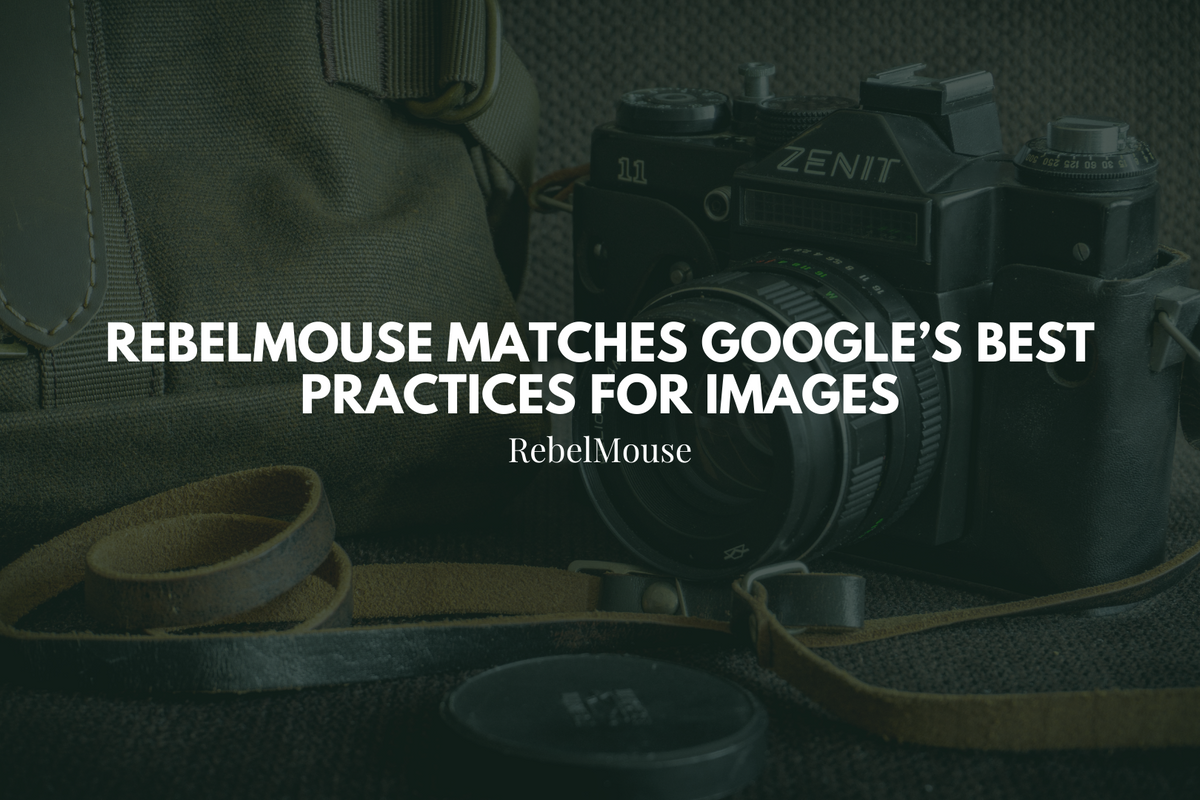
Being certain that everything on your site is optimized both for performance and for following Google Search's guidelines is an exhausting task. Fortunately, RebelMouse takes that worry out of your hands by building our platform around the principles of page experience and the belief that all sites built on our platform should be flawless.
Google Images is undoubtedly the leader in image search online, and they have many guidelines on how images should be handled. Here at RebelMouse, we make sure that your site is able to follow those guidelines right out of the box. Google's recommendations fall under a number of general topics:
- A great user experience
- Be descriptive
- Structured data
- Speed
- Alt text
- Make images discoverable
Read on to learn how RebelMouse handles images in line with the guidelines from Google.
A Great User Experience
User experience is a major hallmark of Google's goal to send traffic to the best-performing, high-quality sites that are out there, and this is true when it comes to the images on your site, too! A key element to consider, is to make sure that your site is created with a user in mind — not a search engine. That mindset is what creates the best sites for people, and that in turn leads Google to prioritize those sites. Your content will even affect how well your images show up in search. Higher-quality sites with higher-quality content will generally rank higher.
There are many ways to optimize the way that you use images in a general sense. First, make sure that your images are contextually relevant and are placed near content that describes them. With RebelMouse, it's very easy to use our Particle Assembler to keep images and text that are related to them organized.
You also want to make sure that your site is mobile friendly. We start with mobile first when we design and build sites, so this is never a concern. If you want to check your site to see how it performs on mobile, you can use Google's Mobile-Friendly Test.
Be Descriptive
Just like regular Google Search, Google Images uses titles and snippets to give people the bite-sized details about an article. While Google's algorithm automatically determines what will appear in a snippet, ensuring your metadata (title and description) is clean and accurate can help Google to determine where to surface your content. Metadata is very easy to add to any article using our built-in SEO tools in our Entry Editor, and can easily be added to home pages or section pages (or any other page!) using our Layout & Design Tool.
Structured Data
Structured data is important markup on a page that essentially describes the type of content (among other things) that a particular article is. Google Images recognizes structured data for product, video, and recipes. RebelMouse has many tools that help to set up structured data on your site and help you to be sure you are following Google's guidelines for structured data.
Speed
If you've been following along with search trends over the last couple of years, this one will come as no surprise! Having a fast page is more beneficial to your showing up in Google Images' results. As images are often one of the heaviest parts of a page, they commonly hold up page loads. Our technique for this is to update all images to the next-generation WebP format. This gets you great load speeds, and if you're in a browser that doesn't support WebP, we simply fall back to the original format of the image.
Alt Test
Alt text is a critical element to add to images, as it provides a description of the image for screen readers to bring a site to life for people who are visually impaired. It's also very helpful for SEO and landing on Google Images, as it aids the search engines in understanding what the image is. Imagine an image of Mick Jagger strutting across the stage during a concert. If there's no alt text, a search engine's visual-recognition algorithm might be able to pick up that it's a person on a stage, but that's probably as far as it could go. With alt text, you can label the image "Mick Jagger strutting across the stage during a concert in Barcelona." This way, the search engines and the screen readers can deliver the details!
On RebelMouse, we do some really fun things with alt text! For starters, it's very easy to input alt text onto images directly from our Entry Editor. We have three fields that you can simply add data to when you upload an image: alt text, caption, and credit.
Next, we make sure that the URL path of the image follows best practices as well, by assigning the alt text to be the image's filename. This allows for the image to have an SEO-friendly filename that's helpful in landing on Google Images, too, since it gives the engine details about the image.
Make Images Discoverable
Google recommends that you add the correct semantic markup to each image so that they can be correctly parsed, and we do this by default.

Images are included in RebelMouse sitemaps, and images can be stored on your own domain or on a RebelMouse subdomain.
You'll also want to make sure you're using appropriate file types that Google supports (e.g., BMP, GIF, JPEG, PNG, and SVG), and you'll want to make sure that your images are responsive as well. This is easy on RebelMouse since we automatically convert images into the preferred next-generation format WebP.
Need help optimizing your images for Google or want to learn more? Contact support@rebelmouse.com or reach out to your account manager today.
Not on RebelMouse yet? Let's chat!















































































